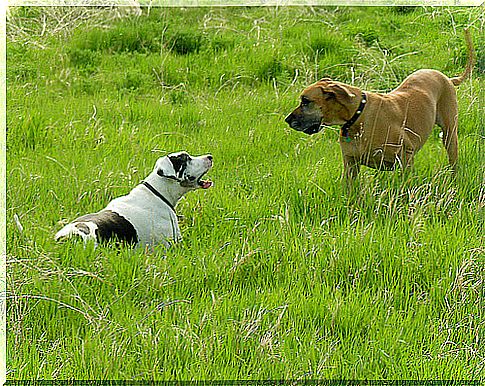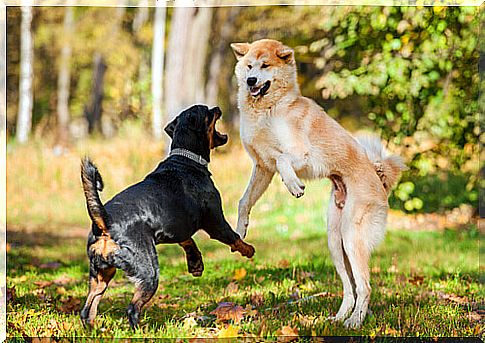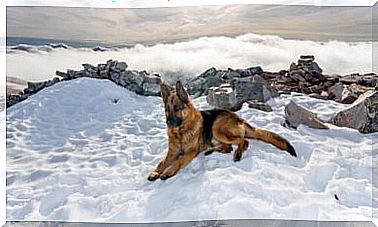Why Do Dogs Bark At Other Dogs

Seeing two dogs barking at each other is a rather frequent image, in front of which we are often inclined to think that they are doing it because they are angry. In fact, dogs bark because it is their primary way of communicating, which is why their barking doesn’t always mean the same.
Just like with people, your dog’s body language can tell you a lot about him and his intentions. For this reason, when you hear him bark, you should also pay attention to the following parts of the body:
- its tail;
- his ears;
- his gaze;
- his posture.
Dogs use body language as an alternative means of communicating, and it is for this reason that, when observed together with his barking, he will be able to tell you why your four-legged friend is barking at another dog.
Good barking

Your furry friend needs to socialize, just like people, and it is therefore normal for him to try to make friends with other animals. So far, there is nothing to object. But how can you find out if your dog is barking at another because he wants to be his friend or because he wants to attack him?
Here is a series of gestures that can guide you in the interpretation of his barking:
- Tone and intensity of the bark. If it is a matter of severe and light barks, almost as if they were whispers or small howls, you need not fear: your dog is simply talking to his fellow man.
- Tail firm but not rigid. If your dog keeps his tail firm and relaxed, with no stiffness shadows, then his intentions are good.
- Friendly look. You certainly know your four-legged friend well and you just need to look him in the eye to recognize if he is sad or angry, if he is interesting or wants to attract attention. Observe his gaze when he barks at another dog, and you will immediately know what is on his mind.
- Ears turned up. Dogs prick their ears when something piques their curiosity. It is therefore not necessarily a negative gesture, even if it has certainly already happened that your dog, intrigued, has approached and then, not satisfied, has had an aggressive reaction. It is a gesture, therefore, which in itself does not reveal any intention, but if it is accompanied by the forefathers, it can remove any doubts from you.
If you notice one or more of these gestures in your furry friend, you don’t have to worry: your dog just wants new friends, or maybe, who knows, a girlfriend! Let him socialize and discover the bonds of canine friendship – he needs it.
Less good barks

As in the case of other barking, certain gestures of your pet will reveal to you if his intentions or those of other dogs who are barking at yours are not entirely friendly:
- Open mouth and bared teeth. Dogs don’t smile, so if your dog shows his teeth while barking at another or vice versa, then it’s time to cut and run!
- Long and deep barking. If your dog, or another who is approaching, emits loud, continuous and intense barking, there is no doubt: he is about to bite. It is not about communication, or maybe it is: it is saying: “I want to bite you!”
- Tense tail. If this gesture accompanies the previous one, it is undoubtedly a clear attacking position. Don’t let the two dogs get close.
- Ears slightly tilted back. Dogs, apparently, adopt different positions of the ears according to the case: when they are angry, they turn them backwards, but without lowering them completely.
It may also be that your dog barks at another because he feels threatened and, therefore, also frightened. The following gestures will reveal to you if you are in this situation:
- Ears fully back.
- Tail between the legs.
- Unconvinced barking.
- Arched body.
- Back off while barking.
In this case, you can try to reassure your dog, pick him up, stroke him and, if the other dog is calm and does not bark, stroke him in front of your dog too, so that he sees that he is not an aggressive animal. Then, little by little, without putting him down, bring him closer to the other dog so that they can smell each other and get to know each other.
In any case, do not silence your furry friend: it is his way of communicating. However, if you do not want your dog to bark at others just because of aggression, do not stop reading our articles: you will certainly find more than one able to give you good advice to avoid this unpleasant situation.
Images courtesy of Jon Hurd.









